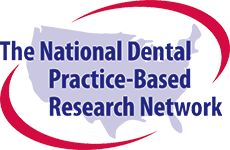Our latest Quick Poll results Participants shows Network dentists are driven by their dedication to improving patient care and keeping up with the latest clinical advancements. However, they face challenges such as time constraints and difficulties with patient recruitment.
Business Outcomes Quick Poll Results

Introduction
The purpose of this Quick Poll was to evaluate Network participants’ perceptions regarding the impact of National Dental PBRN participation on various aspects of their clinical and business outcomes including clinical decision-making, internal and external relations, organizational culture, and risk management.
Methods
Study Design and Participants:
This is a cross-sectional survey with dental practitioners, members of the National Dental Practice-Based Research Network in the United States.
Data collection:
Members of the network were invited to participate in an online survey through email and social media channels. Two email invitations were sent to all members. The Quick Poll was announced on the network’s social media accounts (Twitter, Facebook, and Instagram). The Quick Poll was open from August 12th until September 19th, 2022. The page was opened 357 times and completed 116 times.
Measures and Data Analysis:
The survey content included five questions. First, we inquired about the impact of participation in the network on the dental practices’ relationship with patients. We asked the dental practitioners how learning and contributing to scientific evidence through the Network impacted their patient care recommendations. We also asked how incorporating evidence-based best practices impacted their patient care. Finally, we asked the impact of Network participation on their organizational climate and culture.
The data were collected through a web survey in Constant Contact, a digital and email marketing platform. Data were analyzed using descriptive statistics.
Results
The final sample size was 116. Of the total number of respondents, 58 (50%) had conducted Network clinical studies in their practices.
When queried about their practice’s relationship with patients, 63% of respondents agreed that Network participation strengthened their relationship with existing patients, and 43% agreed that it elevated their patients’ appreciation for the practice.
The majority of respondents agreed that learning and contributing to scientific evidence through Network participation made them feel more confident in patient care recommendations (70%), and that it enhanced the credibility of their recommendations among their patients (53%), as well as alleviated uncertainty in patient care decision-making (51%).
Practitioners felt confident that incorporating best practices learned by participating in the Network into patient care improved patient care outcomes (87%), patient satisfaction (56%), and decreased both treatment failures (48%) and postoperative complications (43%). A sizable majority (94%) responded affirmatively to at least one of these questions. Interestingly, though each of these outcomes may mitigate the risk of malpractice litigation, only 30% expressed that Network participation lowered that risk.
When thinking about their office staff, practitioners believed that Network participation impacted organizational climate and culture mostly by strengthening the practice’s culture of continuous quality improvement (50%), promoting staff professionalism (42%), and improving the way the practice team thinks about day-to-day operational challenges (39%).
Clinical study participation was associated with dramatically higher affirmative response rates to several of the questions above, particularly regarding the organizational climate and culture, compared to those who did not report participating in a clinical study. From those with Network clinical study experience, responses that National Dental PBRN participation elevated staff morale were 271% greater than those who hadn’t conducted a study (45% vs 12%). Similarly elevated relative response rates were seen on:
- attracting high quality staff (200%)
- promoting staff professionalism (127%)
- retaining high quality staff (114%)
- elevating patients’ appreciation of their practice (164%)
- elevating their practice’s reputation in the community (118%)
Practitioners confirmed that National Dental PBRN participation strengthens relationships with existing patients, improves patient satisfaction, and/or elevates the practice’s reputation in the community (84%), yet only 35% of these respondents communicate their Network participation in any marketing efforts. Of the 30% who reported that Network participation elevates their practice’s reputation in the community, just 6% communicate their participation in external marketing efforts.
Conclusions
Overall, respondents believed that participating in the National Dental PBRN had positive impacts on several key performance indicators of their businesses. Many of those impacts, particularly regarding staff relations and team performance, were greater among respondents who had conducted a Network clinical study. Most respondents believed that participating in the Network has positive impacts on patient and community relations, yet may be missing opportunities to further enhance business outcomes by communicating their participation to those audiences.
Highlights
- Practitioners reported that participation in the National Dental PBRN had positive impacts on several key performance indicators of their businesses.
- Positive business impacts, particularly regarding staff relations and team performance, were greater among practitioners who had conducted Network clinical studies.
- Most practitioners considered that Network participation had positive impacts on patient and community relations, yet may be missing opportunities to further enhance business outcomes by communicating their participation to those audiences.
Table 1. Perceptions of dental practitioners about their participation in the National Dental Practice-Based Research, 2022.

Interested in Becoming a Member?



